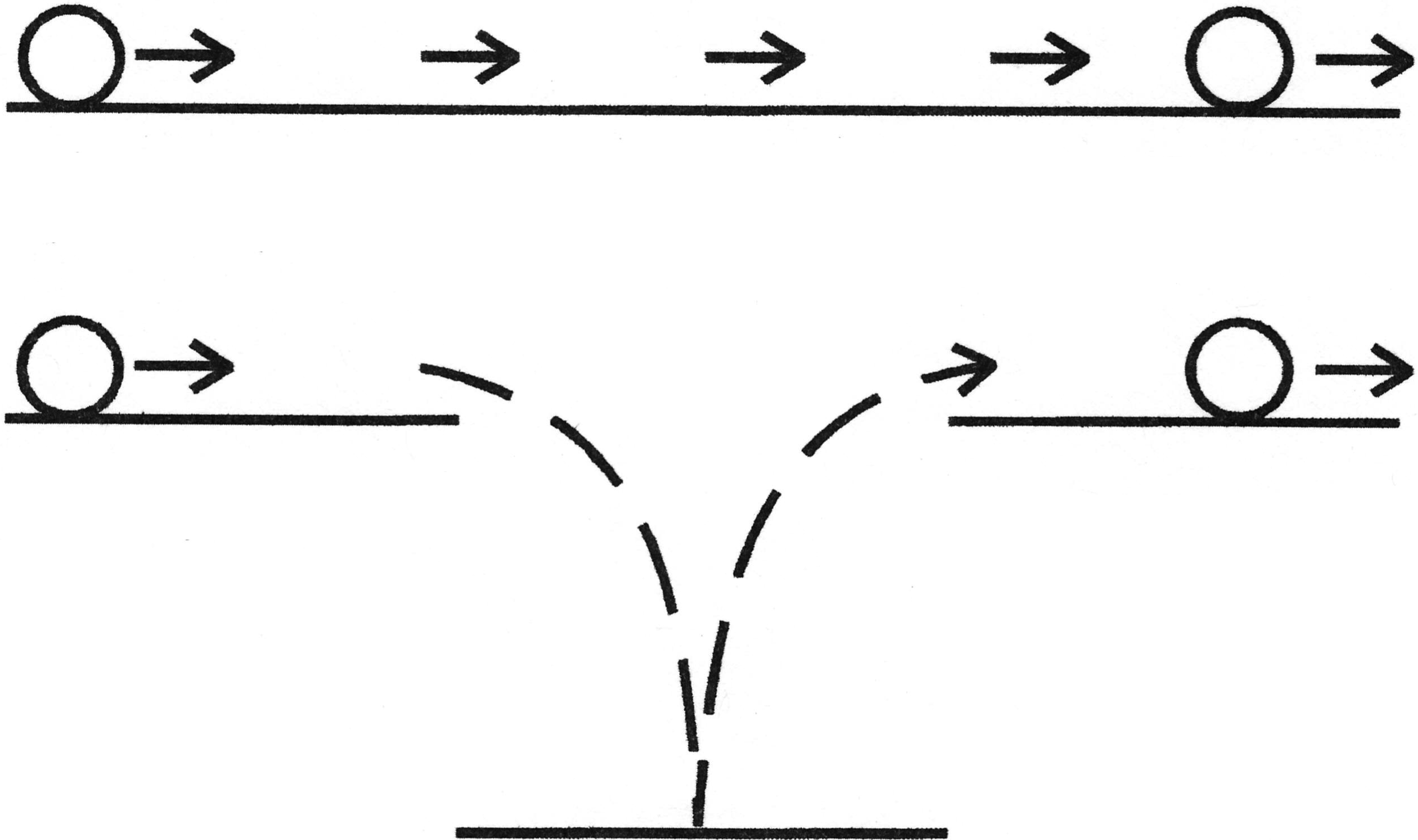John Childs, Grenville Christian College, Brockville
jchilds@grenvillecc.ca
This is a good exercise to use after you’ve done kinematics, dynamics, and energy. We all talk about the kinetic and potential energy of roller coasters and their speeds, and the demonstration will let your students apply their critical thinking skills to this kind of situation. Be sure to have your students examine the setup and predict the outcome,
before you run the demo. The question is: “Which ball gets to the end of the ramp first?”

I give this demo as a quiz, asking students to predict a result (A, B, or C) and write a paragraph defending their choice. I give some points for a correct answer and some more points for a correct, logical argument.
Most students seem to choose B, since it is the shortest distance. Some will choose A, B, and C, or that all will get to the end at the same time. This is perhaps a mixup with the concept that they all have the same speed when they arrive at the end, at whatever time. The correct answer, or course, is A, since it travels its ‘valley’ at a higher speed, more than making up for the fact that it has a little farther to go.
You can build these ramps using curtain rods and plywood (email me for plans), or you can simulate the ramps using
Interactive Physics. The computer simulation allows some interesting extensions to be added to the demo. Imagine two side-by-side tracks of path B. Place a gap in one track so that the ball falls to a “perfect” bounce and returns to its original height. As long as the gap-ratio is correct, both balls get to the end of their tracks at the same time, no matter how deep a bounce one ball takes! It is quite striking to watch the computer demo and see the balls actually do what is predicted. If you use
Interactive Physics, I can email you the simulations.

Column Editor: Ernie McFarland, Physics Department, University of Guelph, Guelph, Ontario, N1G 2W1 Tags: Energy, Forces, Motion



